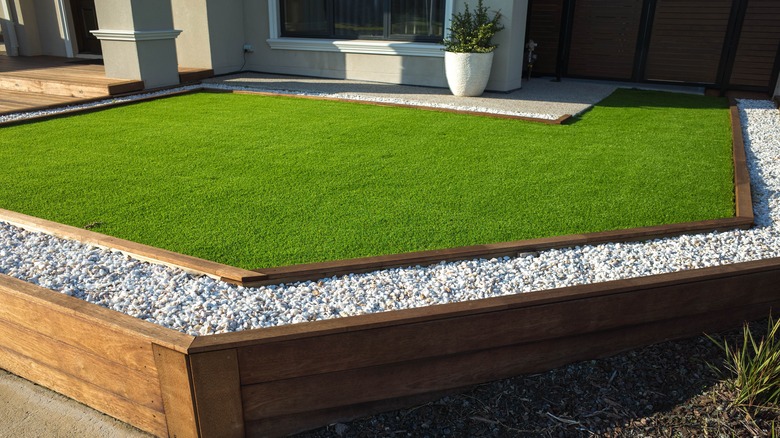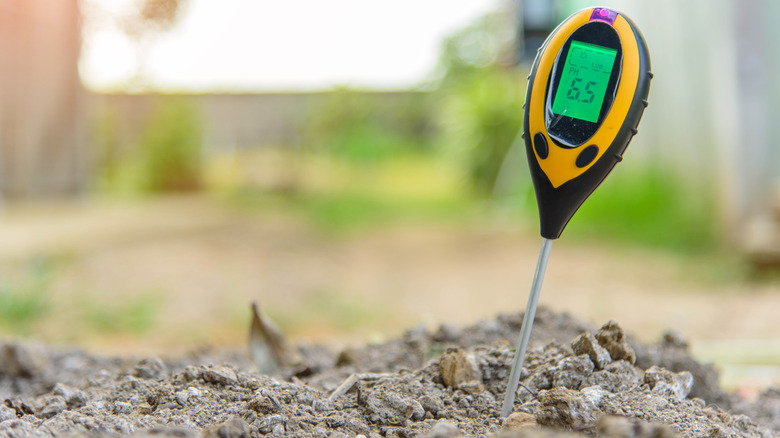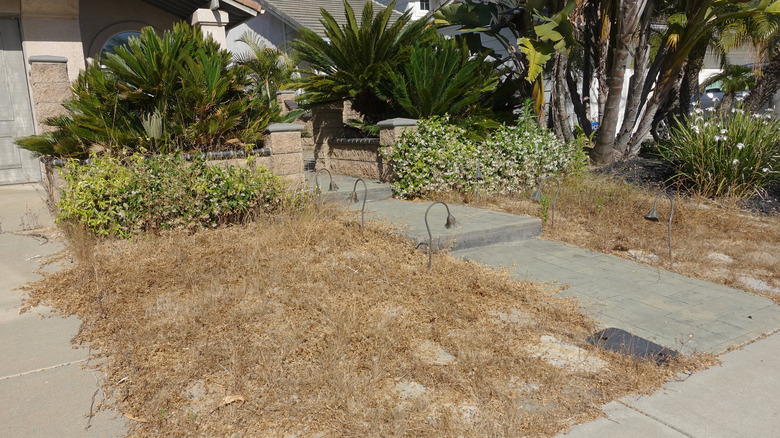Adding Lime To Your Lawn May Just Be The Key To A Luscious Yard
A lush, green lawn not only enhances the curb appeal of your home but also provides a safe and comfortable space for your family to enjoy. However, maintaining a healthy lawn can be challenging, especially if your soil is too acidic. If you're struggling to get it to look its best, adding lime may just be the solution you've been looking for. Lime is a natural soil amendment that can help balance the pH levels in your soil, making it easier to absorb the nutrients it needs to thrive. In this article, we'll explore the benefits of adding lime to your lawn, how to determine if you need it, and the dangers of over-liming. It's important to note that while lime can be highly beneficial for your lawn, it's not a miracle solution. Proper lawn care practices, such as regular mowing, fertilizing, and watering, are still essential for maintaining grass health.
So, let's dive in and learn how adding this to your garden maintenance can help you achieve a luscious yard.
When to apply lime
Before adding lime to your lawn, it's important to determine if it actually needs it. You can do this by testing the pH levels in your soil. You can purchase a soil test kit at your local garden center or online. If your soil pH is below 6.0, you may need to add some. The best time to apply it is between the fall and the beginning of spring. This is because lime takes time to react. Applying during fall or early spring allows it to penetrate the soil over the winter months, giving time to benefit from the improved soil conditions come growing season.
However, be aware that this should not be applied if your grass is stressed or dormant. Applying lime during hot, dry periods or when your lawn is in poor health can cause further stress and additional damage. Therefore, it's essential to wait until your lawn is healthy and actively growing before applying any treatments.
The dangers of over-liming
Applying too much lime can cause the pH level of your soil to become too high. This makes it difficult for your lawn to absorb nutrients, even essential ones like nitrogen, phosphorus, and potassium. This can result in poor growth, yellowing, and even death of your lawn. Over-liming can also lead to the leaching of essential elements from the soil, which can be harmful to the environment. When excess lime is applied, it can dissolve and wash away, taking other nutrients with it. These can enter nearby waterways and soil, which can be harmful to aquatic life and plants that prefer acidic soil, such as rhododendrons, blueberries, and azaleas. These plants may struggle to absorb nutrients in alkaline soil, leading to stunted growth and poor health.
When soil becomes too alkaline due to the overapplication of lime, it can have a sterilizing effect on the soil. This occurs because the high pH levels create an environment that is hostile to beneficial microorganisms, such as bacteria and fungi, that are crucial for healthy soil and plant growth. Sterilized soil can also cause a loss of biodiversity, leading to the development of pests and diseases that can harm your lawn and other plants.


